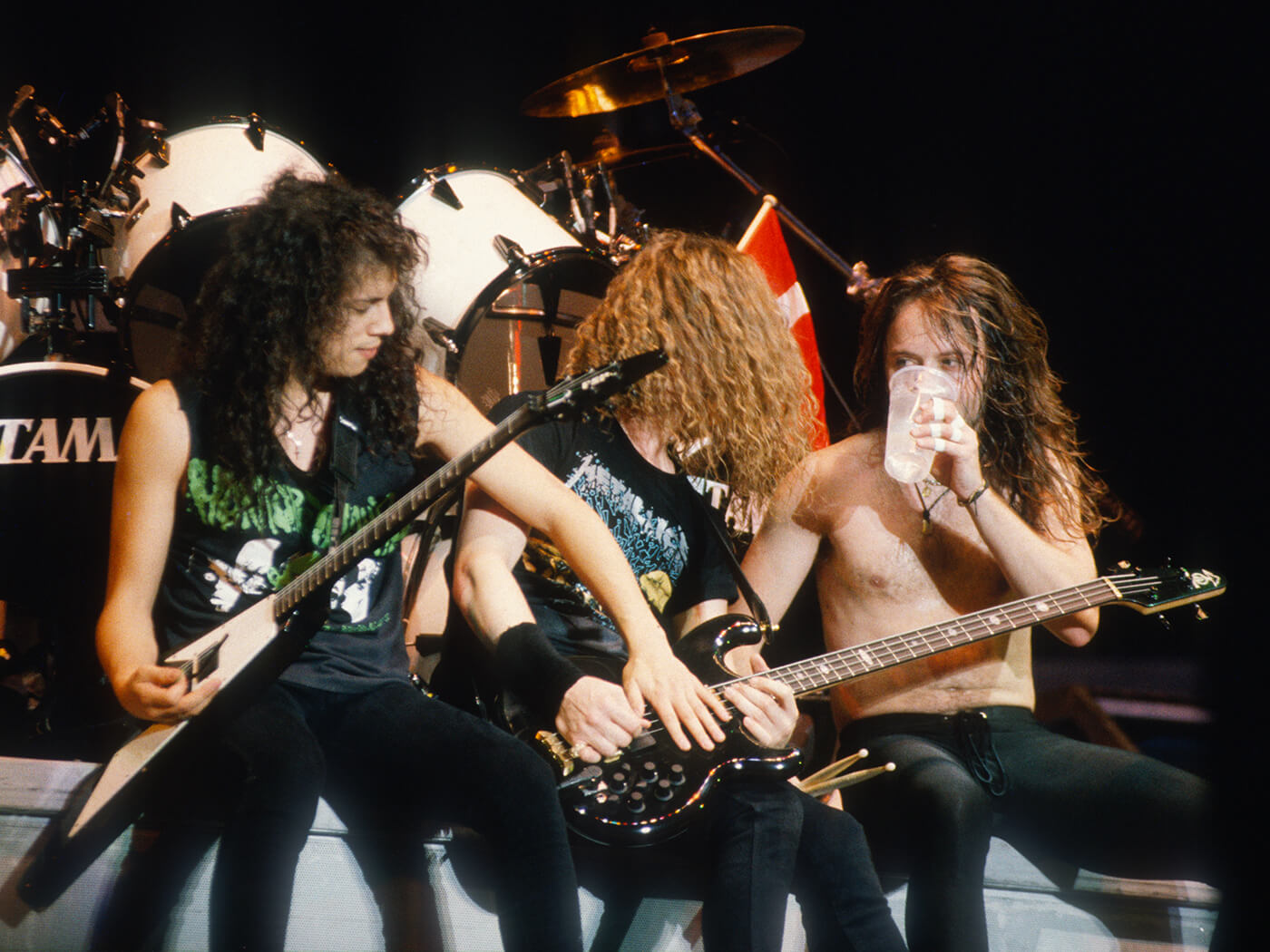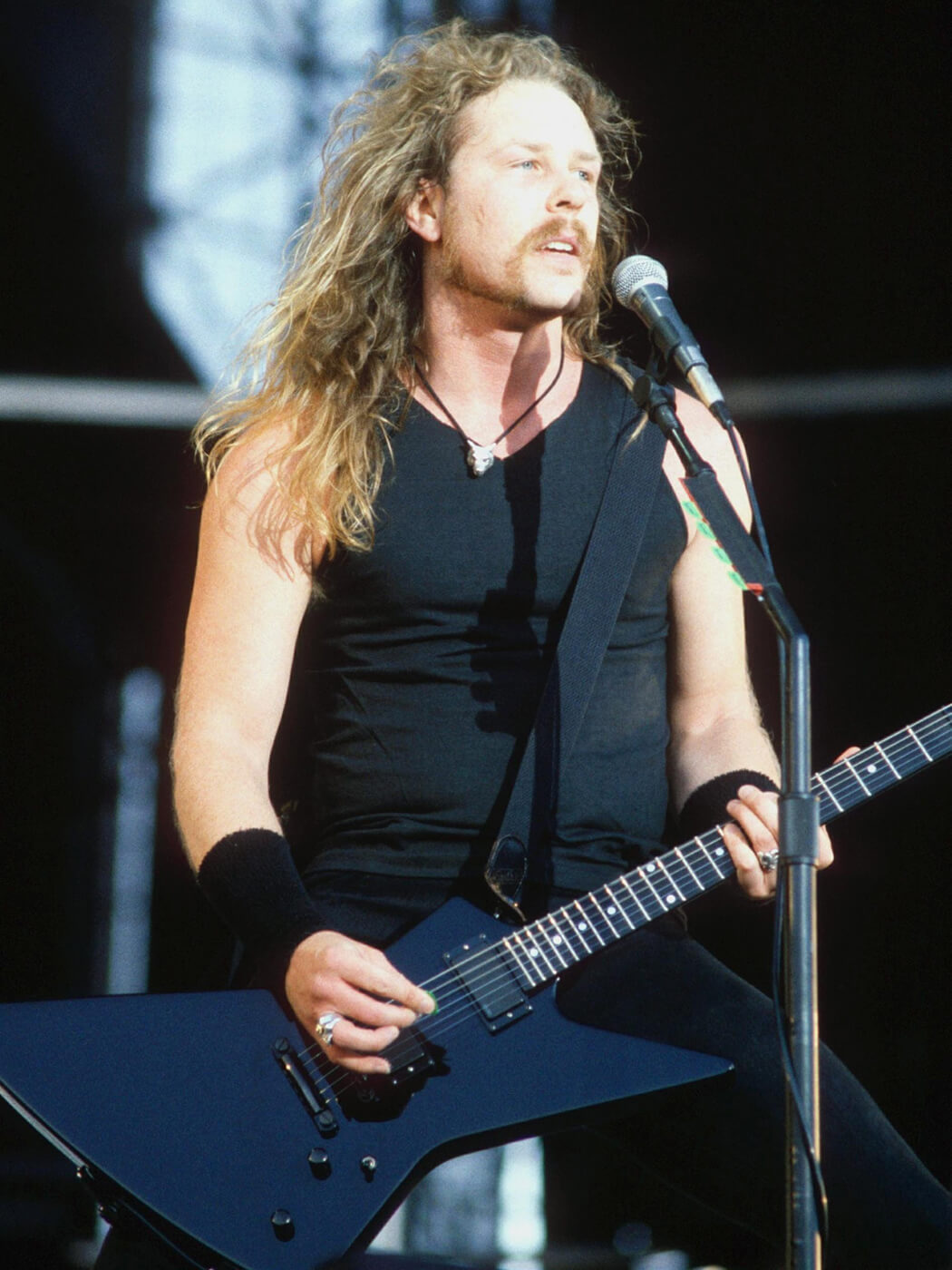Related Tags
The Gear Used on Metallica’s Black Album
What did Hetfield and Hammett use for this most iconic and influential of Metallica recordings? Read on…

Kirk Hammett and James Hetfield performing live on stage. Image: Mick Hutson/Redferns
Metallica’s self-titled 1991 release, known to history as The Black Album was a turning point for heavy music. The hook-laden riffs that can be heard throughout the album are, arguably, what drove Metallica to mainstream success. The album debuted at number one in ten countries and spent four consecutive weeks at the top of the Billboard 200. Today it remains one of the best-selling albums worldwide, being certified platinum sixteen times by the Recording Industry Association of America [RIAA] in 2012.
The album’s success made it somewhat of a benchmark for the tones that would come to define modern heavy music. In this article, we will take a look at the gear that was used to sculpt the brilliant guitar tones on the record. The album was recorded at “One on One Studios” in Los Angeles over the span of about eight months, with Bob Rock sitting in the producer’s chair.

Guitars
James Hetfield made the switch from Gibson to ESP well before the 1990s. By the time the band started recording The Black Album [October 6, 1990], Hetfield already owned at least three ESP MX models [220 and a 250] and rumor has it that the MX series was so named by combining ‘M’ for Metallica, and ‘X’ from eXplorer, and the numbers 200 and 250 corresponding to the price of the guitars [in Yen], making the model something that ESP created solely for Metallica, closely modeled after the iconic Gibson shapes.
The MX series guitars were later renamed the EXP [indicating the guitars were very closely modeled after Gibson ‘EXP’lorers], and later on, discontinued when Gibson threatened litigation. Around the Master of Puppets tour, Hetfield was pretty reliant on the ESPs on stage, and they were used in the studio as well. In fact, Kirk and James were both using ESP Guitars by October of 1990 – Kirk started using them in 1988 and James started in 1986 or 87. They both used EMG pickups in their guitars.
In addition to their signature/custom ESPs, [Kirk had V-style and Strat-style ESPs], Kirk used a 1989 Gibson Les Paul in the studio. Additional guitars were employed for certain parts or textures. For example, Hetfield used a Danelectro Jerry Jones Baritone to add a layer of muted “chugs” to beef up the bottom end on the Sad But True riff. A Gretsch White Falcon was used for the clean, airplane-sounding dive bomb heard in Nothing Else Matters, and a Fender Telecaster with a B-Bender, that was used on My Friend of Misery – it is believed to have been the same Tele used on Unforgiven II and we know that guitar to have been a ’52 Reissue. A Danelectro/Coral Electric Sitar was used on Wherever I May Roam.

Amplifiers
As for amplifiers, James Hetfield had lost his beloved Jose-modded Marshall SLP that he used on Kill Em All and had been using other Marshalls for the subsequent albums. The loss of that amplifier is rumored to have been, in part, the inspiration for the song Fade To Black. Fortunately for Hetfield, Bob Rock also had a Jose-modded Marshall and Hetfield was able to use that for the recording of The Black Album to accompany the Boogie Mark II that Hetfield had been using on previous Metallica records [more on that later…].
Prior to this, on Ride The Lightning, Hetfield used an old Ibanez Tube Screamer to drive his signal into the amp a little harder, trying to replicate what the Jose Arredondo extra gain stage mod did for him. According to Hetfield, he did end up getting a new Jose modded Marshall toward the end of the Black Album recording sessions and Kirk also had one in the works, but Jose passed away before it was complete. However, it is most commonly believed that Bob Rock’s Jose-modded Marshall that we hear on the album. But according to a 2023 interview with Metallica producer Greg Fidelman in Total Guitar, Hetfield used his Jose-modded Marshall on “nearly every track” on the new 72 Seasons album. Fidelman claims that the amp needed work and was repaired by Dave Friedman for the recording of the new album.
Hammett used a Mesa Boogie IIC++ in the studio as well, in conjunction with a Bradshaw preamp [through a VHT power amp] that is most evident in his lead tones. He also used a Marshall in the studio although we can’t be certain if it was the same Jose-modded Marshall that Hetfield used or if it was a different one. These tones were mixed and blended throughout the album.
The distinct tone of Hetfield’s guitar tracks was the result of a lot of layering, each track using a different setup. This is something that has become very commonplace in the realm of heavy metal recording – almost to its detriment. Like Hammett, the basis of his tone was a Mesa Boogie Mark IIC++ from the mid-80s. The IIC++ was a variant of the Mesa IIC+ circuit. The Mesa factory provided an additional mod for the amp heads that went out to Kirk Hammett and James Hetfield. This modification, dubbed the “++ Mod”, increased the gain a little in the Lead Channel but was never put into production, with approximately 20 mods performed by Mesa Boogie before IIC+ production ended. Vivian Campbell of Dio also owns one of these coveted amps.

Effects
The effects loop used by Hetfield contained two Aphex EQF-2 EQ units [in addition to the EQ controls on the Mesa] and an Aphex CX-1 Compressor. The role of the EQ was to cut out the 1.2kHz frequency, which was not an unusual practice – Dimebag also did this for his rhythm tones. This was being pushed through several different variations of cabinets but mostly Marshall 1960 4×12 cabinets – the bulk of the sound was done with Celestion Vintage 30 speakers.
The tones on that album remain one of the finest in modern hard rock and have boosted The Black Album to be one of the greatest albums of all time.
